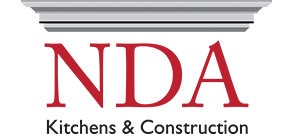
As Long Island’s premier kitchen remodeling company, NDA Kitchens specializes in building beautiful, luxurious and functional kitchens, bringing lasting joy and value to thousands of customers for decades. We handle all aspects of kitchen remodeling. But we are more than just kitchens.
Call us on 631-360-8949
192 Smithtown Blvd.Nesconset, NY 11767
Mon-Fri: 8:00am – 5:00pmSat: 9:00am – 5:00pmSun: By appointment only

